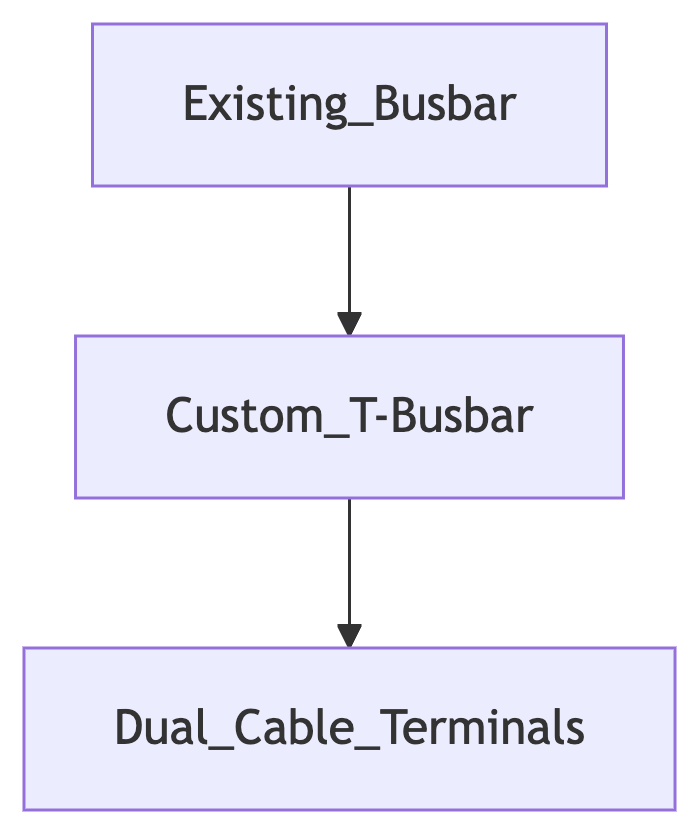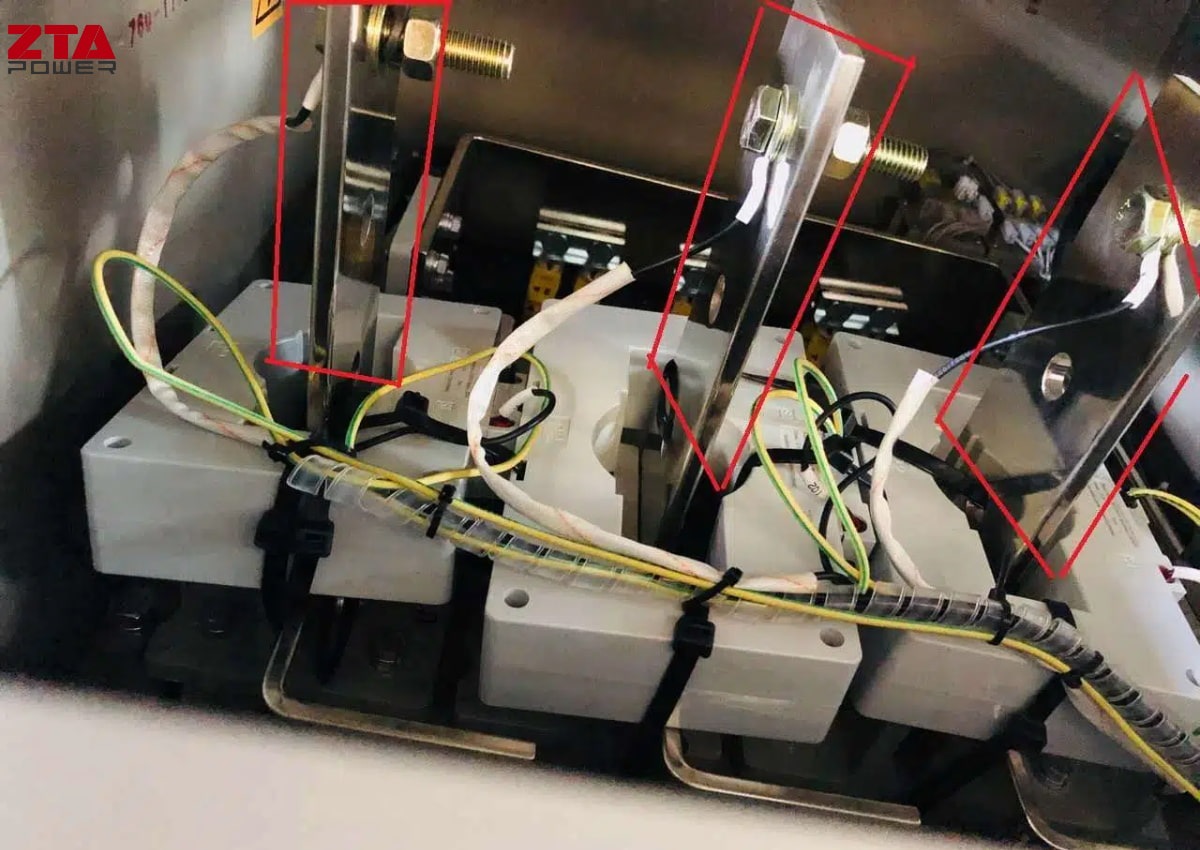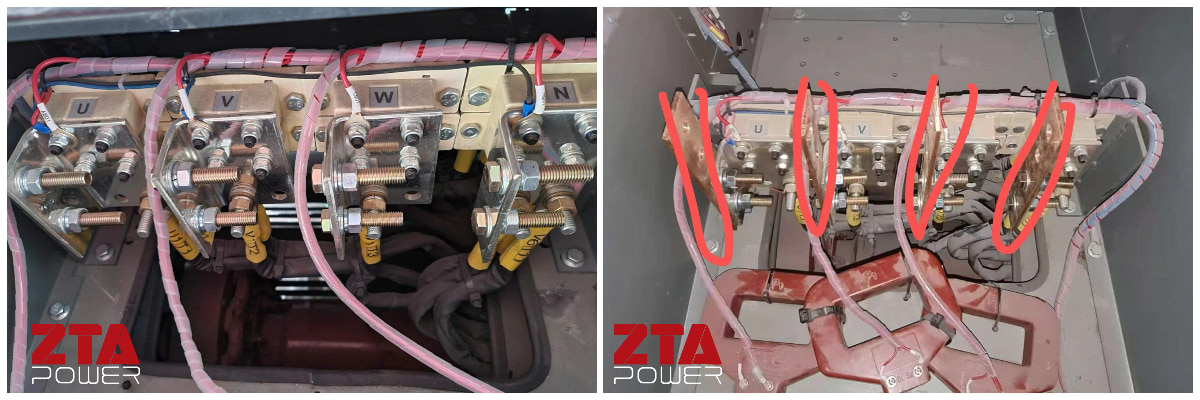Optimizing Cable Connections on Diesel Generator Busbars Under Tight Clearance Constraints
I. Core Issue Analysis
Standard Copper Busbar: 160×15mm (Cross-section: 2400mm²)
Rated Current: 720A (per unit) → Parallel Total Current: ≥1440A
Wiring Bottleneck
II. 4 Optimization Solutions (Ranked by Feasibility)
Solution 1: Custom Extended Busbar (Recommended)

Specifications:
Advantages:
Low cost (~$120/unit)
No structural modification (bolt-on connection)
Solution 2: Centralized Wiring at Paralleling Cabinet (No Generator Modification)

Procedure:
Connect generators to cabinet with single 240mm² cable (length ≤2m)
Upgrade cabinet busbar to 3200A capacity (6 terminals: 2 in, 1 out)
Key Points:
Short cables eliminate bending radius issues
Reconfigure cabinet busbar to horizontal layout
Solution 3: Hydraulic Angle Lugs
Application: Pre-installed cables that cannot be replaced
Procedure:
Recommended brands:
| Brand | Model | Space Saving |
| E-TA | OT-2R-240 | 40° angle |
| Panduit | LCDR-240 | Vertical exit |
Torque: M16 bolts ≥110Nm (with antioxidant paste)
Solution 4: Busbar Cooling Slots (Temporary Fix)
Procedure:
Mill heat dissipation slots on non-contact surfaces (2mm deep × 5mm wide × 20mm spacing)
Increases cooling area → Allows 20% temporary overload → Reduces required cable size

III. Technical Verification
1. Current-Carrying Capacity Review:
Parallel Cable Standards:
| Current | Cable per Unit | Solution |
| ≤1500A | 2×240mm² | Solution 1 or 2 |
| >1500A | 3×185mm² | Solution 2 + busbar upgrade |
IV. Implementation Steps (48-Hour Timeline)
1. Site Survey:
2.Options:
3.Testing:
1-hour full parallel load test → Infrared thermography busbar ΔT ≤40K (ISO 8528 standard)
